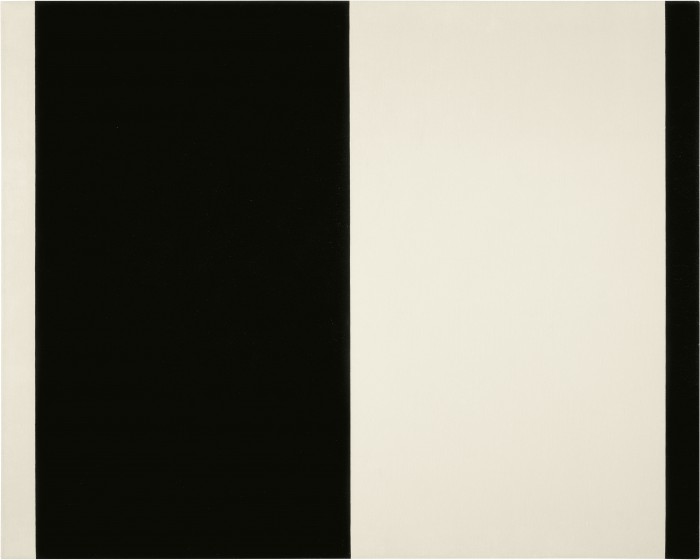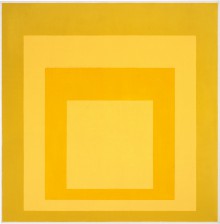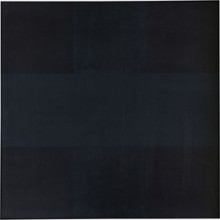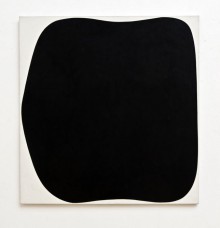John McLaughlin
#13 1962

Reproduction of this image, including downloading, is prohibited.
Spirituality and the Ethics of Inspiration
The sixteenth-century Japanese painter Sesshū included in his landscape paintings what he called the “Marvelous Void.” This void was an open space on the canvas between the sparsely placed objects (trees, houses, etc.) that allowed the viewer to metaphorically step into the painting. John McLaughlin was educated at private boarding schools and universities where he took an interest in Japanese painting, eventually traveling to Japan to study and paint. McLaughlin’s goal for his painting was to induce the viewer to become aware of perception itself, rather than focusing on the shapes or objects in the painting. He argued that the Marvelous Void was one way to invite the viewer to enter the painting and experience perception. As you look at this painting, ask yourself: Where does your eye move? How does your body react?
—Callum Tresnan ‘23







